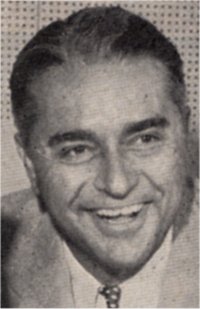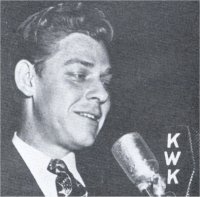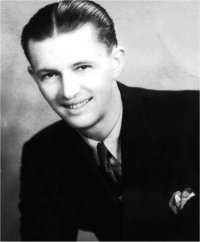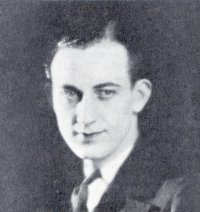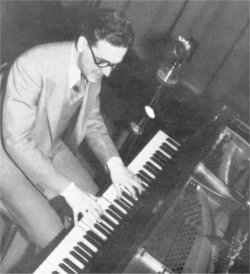Radio Articles
On A Cold December Night
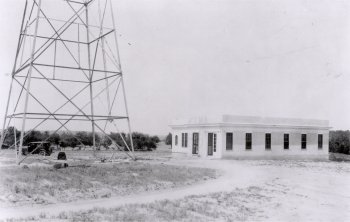
transmitting shack was built. The building
shown is still standing at the end of
Simmons Street north of Manchester.
Freezing temperatures at the end of December in St. Louis are to be expected. But even though the mercury dropped to 33 degrees the night of Christmas Eve, 1925, a group of engineers apparently had no qualms about trekking to the middle of a field in the (then) far-western suburb of Kirkwood for a special nighttime event.
That was the night KMOX, St. Louis’ “super station” signed on. The inaugural broadcast, which began at 7:00 p.m. and lasted well past midnight, focused the spotlight on those who had worked to make the station a reality, and it meant an unusually large contingent of engineers was stationed at the station’s transmitter building north of Manchester Road near Geyer.
Telephone engineer Ray Elmore recalled just how rural the setting was at the transmitter site: “At the time the location of the two original towers on Geyer Road north of Manchester was a big cow pasture grown up in weeds and brush and there were no circuits out there. It’ll be hard for people who live there now to realize just what I’m talking about. Kirkwood didn’t extend beyond Manchester Road north at all…They had us standing by in case there was trouble on the circuits. And we were standing outside of this little building they had there out in that cow pasture on Christmas Eve.”
The “little building” to which Elmore referred was actually an 11-room stucco structure that housed the huge transmitting equipment for the station. In an on-air interview at KMOX in the ‘70s he remembered a windy night, but he also remembered a sense that the crew of engineers at the transmitter was part of something very special.
For KMOX ownership and management, that inaugural broadcast had to be noteworthy. Three nights of dress rehearsals were scheduled at the studios in the Mayfair Hotel. Station music director Elizabeth Cuney was in charge of coordinating several large ensembles which were appearing on the program, including the Little Symphony, the vested choir of St. Peter’s Episcopal Church and Gene Rodermich’s Jazz Orchestra. It was even more of a challenge because of the limited floor space available – the station had only two studios at the time, and there was a large assemblage of dignitaries who were all planning to speak over the air as well.
Engineering studies showed that the station would achieve maximum geographical coverage by broadcasting the event at night, and radio fans across the nation were alerted in advance. An article in the Christian Science Monitor dubbed the coming Christmas Eve broadcast a Christmas gift to the nation. “’The Voice of St. Louis’ as it already is known due to the fact that it has been heralded throughout the country by the big civic and industrial enterprises in represents, will perform a territorial service in the main and a national service incidentally in making millions better acquainted with St. Louis and the greater southwest trade territory of which St. Louis is logically the gateway.”
Who better to extol the virtues of St. Louis than Mayor Victor Miller? He began to speakers’ portion of the broadcast describing KMOX as “our candle on a candlestick through which we shall reach the farther-most corners of this great country of ours and advise them of our ambition, our achievements, and our desire for service.”
The speakers droned on, with representatives from each corporate member of the “Voice of St. Louis, Inc.” being given mike time. At 10:15, KMOX relinquished the airwaves for 15 minutes to a St. Louis station that had had already been on the air for two years. KFUO, which shared a frequency with KSD and which was owned by the Lutheran Church – Missouri Synod, used its allotted time to begin the religiously oriented portion of the KMOX show. This led to Christmas carols by the St. Peter’s choir and then a broadcast of a full Communion service, which led to the stroke of midnight.
Christmas Day 1925 officially dawned on KMOX with the music of the Gene Rodermich Jazz Orchestra. This was followed with more sharing of time with existing stations, WIL and WSBF.
Of all the civic and corporate leaders who addressed the vast, unseen audience over KMOX that night, the man who represented one of the city’s newspapers seemed to have the best grasp of the potential of this radio station. The Globe-Democrat was one of the Voice of St. Louis shareholders. President and editor E. Lansing Ray said of the station, “…we hope to reflect the advantages of a great city and its market – the commercial, industrial, the civic and the cultural assets of St. Louis…Think, then, of the Voice of St. Louis as a community gift.”
(Reprinted with permission of the St. Louis Journalism Review. Originally published 1/08)
